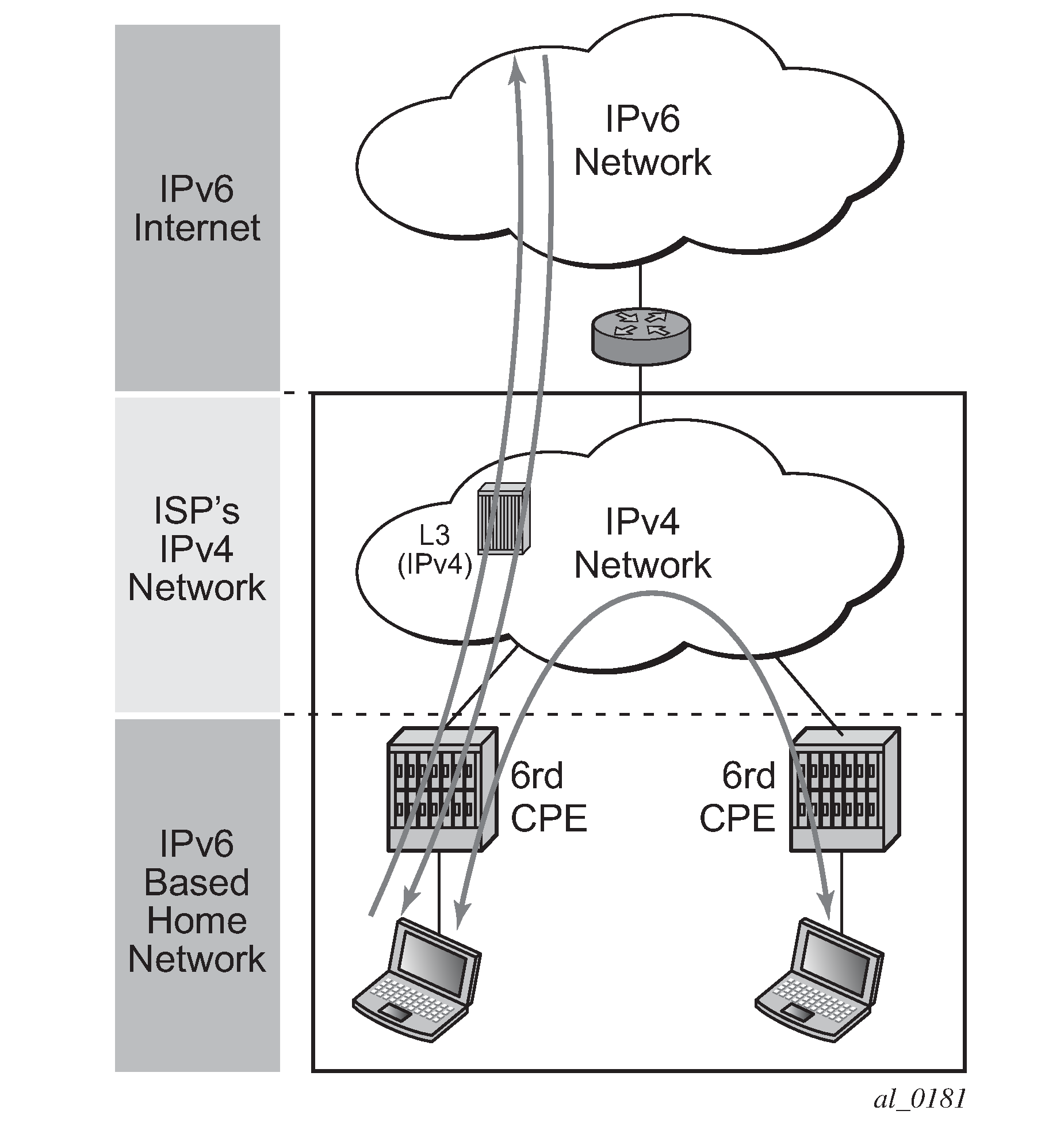6RD/6to4 tunneling mechanism allows IPv6 sites to communicate over an IPv4 network without the need to configure explicit tunnels, as well as and for them to communicate with native IPv6 domains via relay routers. Effectively, 6RD/6to4 treats the wide area IPv4 network as a unicast point-to-point link layer. Both ends of the 6RD/6to4 tunnel are dual-stack routers. Because 6RD/6to4 does not build explicit tunnels, it scales better and is easier to manage after setup.
6to4 encapsulates an IPv6 packet in the payload portion of an IPv4 packet with protocol type 41. The IPv4 destination address for the encapsulating IPv4 packet header is derived from the IPv6 destination address of the inner packet (which is in the format of 6to4 address) by extracting the 32 bits immediately following the IPv6 destination address's 2002:: prefix. The IPv4 source address in the encapsulating packet header is the IPv4 address of the outgoing interface (not system IP address).
6RD is very similar to 6to4; the only difference is that the fixed 2002 used in 6to4 prefix is replaced by a configurable prefix.
An important deployment of 6RD/6to4 deployment is in access network as shown in Figure: 6to4 in access network deployment.

To provide IPv6 services to subscribers, 6RD is deployed in these access networks to overcome the limitations of IPv4 only access network gear (for example, DSLAMs) with no dual stack support.
From an AA ISA point of view, deployment of 6RD in the access network is similar to that of the general deployment case between IPv6 islands with the added simplification that each 6RD tunnel carries traffic of a single subscriber.
When AA ISA sees an IPv4 packet with protocol type 41 and a payload that includes an IPv6 header, it detects that this is a 6rd/6to4 tunneled packet.
AA ISA detects, classifies, reports, and applies policies to 6rd/6to4 packet for ESM, SAP, spoke-SDP, and transit-IP (ip-policy) AA subscriber types.
Fragmented IPv6 are supported only if tunneled through non-fragmented IPv4 packets.
Fragmentation at the IPv4 layer is not supported by AA ISA (when used to tunnel fragmented or non-fragmented IPv6 packets). These packets are cut-through with sub-default policy applied with a possibility of re-ordering.
If the packet has IPv4 options then AA ISA does not look into the IPv6 header. The packet is classified as IPv4 ‟unknown TCP/UDP”. Furthermore, TCP/UDP checksum error detection is only applied for Ipipe and routed services.
If the DSCP AQP action is applied to 6RD6to4 packets, both IPv4 and IPv6 headers are modified. AQP mirroring action is applied at the IPv4 layer. All collected statistics include the tunnel over-head bytes, aka. IPv4 header size.